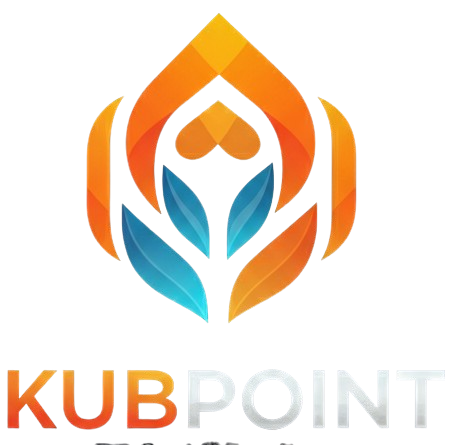Before you even think about code conversion, take a closer look at what you have—and let generative AI (GenAI) help you explain it. Here’s how to modernize your mainframe smarter, not just faster.
The Real Challenge: Understanding Decades-Old Practices and Code
If you’ve worked with mainframes for any length of time, you’ve seen it before: someone in the boardroom gets excited about “digital transformation,” reads a story about AI rewriting COBOL overnight, and suddenly there’s an urgent call to “move everything to the cloud.” But here’s the thing—mainframes aren’t relics, and the problem isn’t the platform. It’s the technical debt we’ve accumulated and the assumptions we make when we talk about modernization.
Mainframes are, in fact, among the most modern, reliable, and secure platforms in existence. The real challenge lies in the decades-old practices, spaghetti code, and institutional knowledge gaps that have built up over time. And that’s what makes the dilemma of COBOL-to-Java conversion so tricky: what should move, what should stay, and what’s the smartest path forward?
Let’s walk through a more balanced—and practical—approach to mainframe modernization, one starting with understanding and values explanation over blind translation, harnessing the power of GenAI to make the journey faster and safer for everyone involved.
Why Mainframes Are Still Mission-Critical
Despite what the “legacy” label might suggest, mainframes remain the gold standard for reliability, security, and transaction volume. Banks, insurance companies, healthcare providers, and governments depend on them every single day. They process billions of transactions, scale on demand, and deliver “five-nines” uptime that most cloud platforms can only dream of.
But let’s be honest: the way many mainframe applications have evolved—layer upon layer of updates, urgent patches, and undocumented quick fixes—has made them harder to manage. The problem isn’t COBOL, the language is fine and easy to learn and work with; the problem is what we’ve done with the COBOL, its original architecture and the technical debt created by years of business-driven expediency.
The Code Conversion Dilemma: Move, Modernize or Leave Alone?
When it comes to mainframe modernization, there’s a natural temptation to see “COBOL-to-Java” as the one-way ticket to a brighter future. After all, Java skills are plentiful, Java tools are modern, and the cloud-native world loves Java. But that doesn’t mean every mainframe application should—or even can—be converted wholesale.
Some applications thrive on the mainframe. They’re stable, rarely change, and benefit from the platform’s unique strengths. If they’re meeting business needs and running reliably, trying to move them off the mainframe may introduce more risk than reward.
On the flip side, some workloads absolutely need to change fast, integrate with modern APIs, or scale horizontally. Here, code conversion or migration can unlock flexibility and accelerate digital transformation. The trick is knowing which is which—and having the discipline to act with intention, not impulse.
Don’t Start with Translation—Start with Understanding
Here’s where too many projects go off the rails: jumping straight to code conversion without first understanding what the code actually does. Mainframe systems often resemble a decades-long game of telephone—patched by generations of developers, with business logic buried under mountains of procedural code. Sometimes, the original authors have long since retired, and the documentation is cryptic (if it exists at all).
Before You Touch a Line of Code, You Need a Map.
That starts with inventorying your applications and their dependencies. What modules do you have? How do they interact? Which business processes do they support? And—crucially—which parts of the codebase are actually still in use?
Visualization tools can help, letting you “x-ray” your environment to see data flows, dependencies, and forgotten dead code. But even with great tooling, you’ll need to extract and document the business logic—the real “why” behind every routine and module.
Code Explanation vs. Code Translation: Why It Matters
Let’s make a key distinction:
- Code Explanation is about making legacy code understandable—turning cryptic COBOL into plain English so current and future teams know exactly what’s happening and why.
- Code Translation is about rewriting that code into a modern language—COBOL to Java, for example.
While translation grabs headlines, explanation is where the real magic happens. It’s about knowledge transfer: bridging the gap between decades of lost documentation and the future of your IT workforce. Without a clear explanation, translation risks turning one tangled mess into another—just in a different language.
Documentation and visualization are vital here. Good explanation—whether created by human experts, AI-powered tools, or both—enables:
- Faster onboarding of new developers
- Fewer bugs and less risk during conversion
- Easier future enhancements and troubleshooting
Refactor Before You Rewrite
Here’s a pro tip that can save months (and sanity):
Don’t just translate COBOL to Java line by line. If you do, you’ll wind up with Java that’s just as convoluted as your old COBOL—only now it’s harder to debug because your Java team didn’t write it.
Instead, treat this as a once-in-a-generation chance to refactor before the conversion. Clean up logic, modularize code, eliminate dead weight, and clarify intent before you begin translation. You’ll thank yourself later when your new Java application is actually maintainable.
Generative AI: Accelerating (But Not Replacing) Human Expertise
Generative AI is changing the game, especially in code explanation and (to a degree) translation. Stories like Morgan Stanley’s headline-grabbing AI-powered modernization show the promise—and the reality—of what’s possible.
But here’s the big lesson: AI can’t replace the need for human expertise and business context. It is a tool that can automate some tasks to save time. Even the best AI can get you to a “working” translation, but human developers must validate, refactor, and optimize the results for efficiency, security, and compliance.
Where GenAI shines:
- Automated code explanation: AI models can rapidly generate plain-language descriptions for modules, making lost business logic visible again.
- Code visualization: AI-powered tools can map dependencies, call graphs, and data flows, giving teams an actionable blueprint.
- Accelerated translation (with guardrails): AI can handle the bulk translation, but it’s up to the team to review, refactor, and ensure the result is “Java as a Java developer would write it.”
Crucially, GenAI brings flexibility. Some teams may use custom-trained models to reflect their unique codebase and business logic; others may rely on curated public LLMs or on-prem solutions for compliance. The smartest organizations use a mix—always keeping humans in the loop.
Finding the Balance: What Stays, What Goes?
The “all or nothing” mindset—either move everything off the mainframe or keep it all as-is—just doesn’t hold up. The most successful organizations assess each workload on its own merit:
- Stays on mainframe: Ultra-high reliability, security, or compliance needs; rare updates; existing skills available.
- Moves to modern platform: Needs rapid iteration, cloud integration, or agility; technical debt is high; Java or modern language skills are abundant.
Remember: the goal isn’t to chase trends, but to optimize for your organization’s real-world needs.
A Checklist for Smarter Modernization
Based on what works for leading enterprises (and what’s tripped up even the best teams), here’s a practical checklist for mainframe code conversion success:
- Inventory all applications and their dependencies—don’t leave room for surprises.
- Visualize code and data flows; identify dead code to retire.
- Extract and document business logic in plain English—use GenAI to help, but validate with experts.
- Refactor for clarity and maintainability before any translation begins.
- Assess security, compliance, and audit requirements for both source and target environments.
- Pilot automated translation on low-risk modules; learn and adjust before tackling mission-critical systems.
- Test rigorously: unit, regression, and performance tests are non-negotiable.
- Train your teams on new tools and languages—make the developers comfortable with them so they are part of their daily work.
- Tune for long-term maintainability and performance in the new environment.
- Govern the entire process, from policy to documentation updates.
- Engage business stakeholders early and often—business context is essential for prioritization.
- Iterate and improve—modernization isn’t a “one and done” project.
The Human Factor: Still the Secret Ingredient
No matter how advanced your tools, human expertise and business insight are irreplaceable. AI can speed up understanding and translation, but only people can validate, contextualize, and steer modernization in the right direction. Involve your domain experts, engage the business, and treat modernization as a team sport.
Explanation First, Then Transformation
Mainframe modernization isn’t about abandoning a “legacy”—it’s about transforming your organization’s most critical assets for the future. Start with explanation and understanding. Use GenAI to illuminate what’s hidden, bridge knowledge gaps, and accelerate the journey. But keep your eyes on the real goal: delivering business value, reducing risk, and empowering the next generation of technologists.
Don’t let buzzwords or bandwagons rush you into a code conversion project. With the right preparation—and a healthy dose of human judgment—you’ll find the balance that works for your business, now and for years to come.
Want to share your modernization story or compare notes? Let’s keep the conversation going. Mainframe isn’t just part of the past—it’s a vital platform for the future, and we get to shape what comes next.

